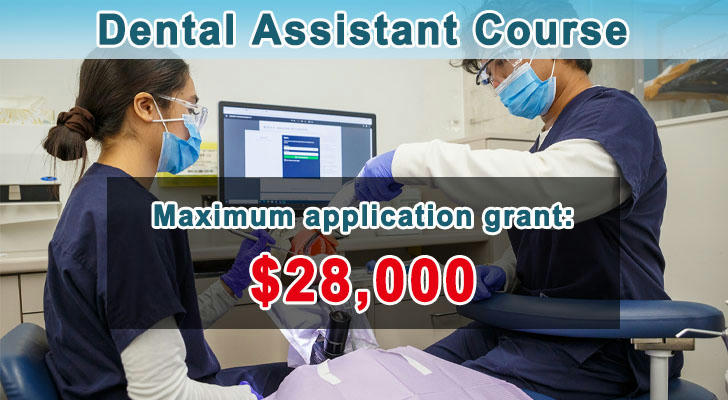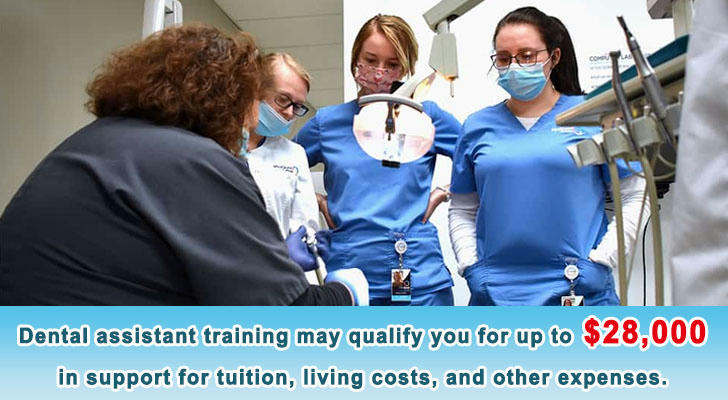🦷Dental Assistant Training in Canada: A Pathway to a Stable and Fulfilling Career in Healthcare
In Canada, dental assisting offers a stable, hands-on career in healthcare. It’s a great option for those seeking a quick path into a growing field without years of study.

✅ What Does a Dental Assistant Do?
Dental assistants are vital members of the dental care team. They provide both clinical and administrative support, ensuring smooth patient experiences and assisting dentists with a range of procedures. Typical responsibilities include:
Preparing and sterilizing dental instruments
Assisting during examinations and treatments
Explaining procedures to patients
Taking and developing X-rays (with proper certification)
Managing appointments and clinic supplies
Supporting infection control protocols
This role combines interpersonal, organizational, and technical skills—perfect for those who enjoy both people-focused and structured work.
🧑🎓 Where Can You Study? What Will You Learn?
In Canada, dental assistant programs are offered by recognized institutions such as George Brown College, Anderson College, Vancouver Community College, and CDI College.
⏳ Program Length
Most training programs range from 8 months to 1 year, combining classroom instruction, hands-on labs, and clinical placements.
📘 Course Content Includes:
Infection prevention and sterilization
Dental materials and chairside assisting techniques
Oral anatomy and treatment planning
Digital radiography (X-rays)
Patient communication and administrative tasks
These programs are often designed to prepare students for the National Dental Assisting Examining Board (NDAEB) certification, a requirement in many provinces to work as a Level II dental assistant.
💡 George Brown College in Toronto is one of the leading institutions offering a certified and NDAEB-aligned dental assistant program. Graduates benefit from a strong academic reputation, modern training facilities, and direct access to clinical placements across the GTA.

💰 Training Support and Financial Aid Options
Although tuition costs vary, many students qualify for support programs aimed at reducing financial barriers, especially:
Second Career Program (Ontario)
WorkBC Employment Services (British Columbia)
Student Financial Assistance (e.g., OSAP)
In-house scholarships and flexible payment plans offered by colleges
These resources make it easier for adults from low-income backgrounds, newcomers, or those affected by job displacement to start training without delay.
👩⚕️ What Happens After Graduation?
Dental assisting offers strong employment potential across Canada, especially as demand for dental services rises with an aging population and growing awareness of oral health.
Common job settings include:
Private dental clinics
Community health centres
Pediatric or orthodontic offices
Public health units
Career progression is also possible. Some dental assistants move on to become treatment coordinators, dental office managers, or continue their education to become dental hygienists.
🧩 Who Is This Career For?
This pathway is ideal for:
Young adults (18–30): Seeking a fast-track into a stable healthcare role
Career changers (30–50): Looking for new direction with practical skills
Adults over 50: Interested in staying active with a meaningful, community-oriented career
Stay-at-home parents or newcomers: Wanting to re-enter the workforce with a job that offers routine, security, and purpose
💬 Many training programs do not require previous healthcare experience or even a high school diploma. Basic English proficiency and motivation are often enough to get started.
✍️ How to Apply? No Complicated Requirements
Starting your journey is simpler than you might think:
Choose a certified college program (e.g., George Brown College or others in your area)
Contact the admissions office or check the college’s website
Submit basic identification and academic background (requirements vary by institution)
Ask about eligibility for government training grants or support
Begin learning at your own pace with structured guidance
Many colleges offer rolling admissions and online info sessions to help you decide if the program fits your goals.
🌟 Real Success Stories
Karina (Toronto, Ontario) After working in retail sales, Karina lost her job during the pandemic and decided to retrain. She enrolled in the Dental Assistant program at George Brown College, supported by Ontario's Second Career funding.
“It was one of the best decisions I’ve made. The training was practical and respected in the industry. Within months, I was working full-time in a downtown clinic,” she says.
Ahmed (Vancouver, British Columbia) A newcomer from Egypt, Ahmed wanted to quickly enter a regulated field in Canada. He joined a certified dental assistant program with strong ESL and exam prep support.
“At first I was nervous, but the instructors were very supportive. I passed the NDAEB and got a job within two months of finishing the course.”
✅ Conclusion: Build a Future in Canada’s Healthcare Sector
Dental assisting is a realistic, rewarding, and respected profession. Training is accessible, the career is community-driven, and demand is steady across the country. With the support of official programs and recognized institutions like George Brown College, now is a great time to invest in yourself and your future.
🎯 Want to become a dental assistant? Share your city or province to explore a range of local programs that can help you start a rewarding career in oral health.
